Tour of Frank Lloyd Wright's Fallingwater
July 25, 2011
This past weekend we took a break from our Great Cities of the US Tour to visit Pittsburgh, Pennsylvania. Pause for laughter. In actuality we traveled to Pittsburgh to attend the wedding of Jessica's college friends Arpi & Adhish. The travel to and from Pittsburgh, and the all-day festivities on Saturday prevented us from spending any time seeing the City, but we did squeeze in an excursion to tour Frank Lloyd Wright's masterpiece Fallingwater in Mill Run, Pennsylvania, about 100 miles east of downtown. Fallingwater is a weekend home designed by Wright and built in 1936 for the wealthy Kaufmann family, owners of Pittsburgh's premier department store, Kaufmann's (now part of the Macy's chain).
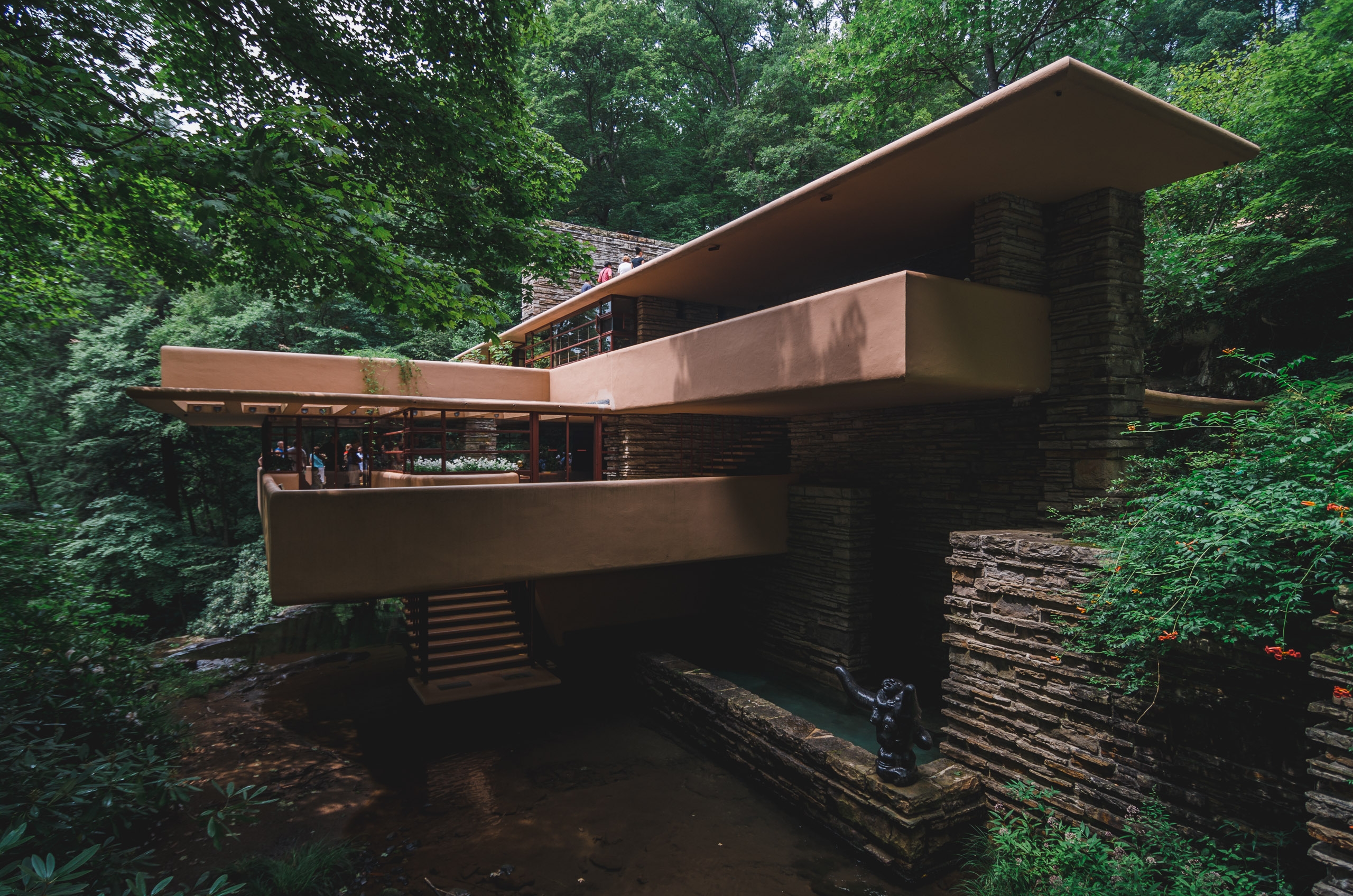
The Entrance over the Water
The drive to Pittsburgh is about 400 miles from New York City, which is on the outer limits of our road trip appetite, but since the flights we're going for well over $500 we opted to drive. Friday traffic across New Jersey and most of Pennsylvania was pretty heavy, and although we only stopped briefly at Wendy's (which was not nearly as good as we remembered), it took us about 7.5 hours to make the trip. Luckily for us, the wedding was in the hotel where we were staying so no further travel would be necessary. The wedding started around 1PM and we got back to our room around 1AM the next day. If you've never been to a Hindu wedding, seek one out (no pun intended). The dancing, singing, wardrobes, food, drinks and celebratory buzz was outstanding. We had a great time among over 325 guests, and despite my bow tie I was never asked to get someone a beverage or clear a plate.
Despite our all day wedding festivities, we were up at 7:30AM on Sunday for the drive to Mill Run, Pennsylvania for our 11AM tour of Fallingwater. Tickets can and should be purchased in advance as all the tours for that Sunday were sold out. The drive to Mill Run is about an hour and 45 minutes on windy, hilly roads so be sure to allow yourself ample time. Tickets are $22 for the regular tour, which lasts about an hour and takes you in and around the home. Photography is not permitted during the tour, and no photos of the home's interior are allowed. For $65 you can take the in-depth tour, which lasts 2 hours and permits indoor photography. I'm not sure how they fill the 2-hour tour as ours was pretty extensive, but it appeared that most were taking it for the extended photography permissions, based on my observation of their rather expensive looking equipment. If you have small children, find a sitter as you have to be at least 9 to go on the tour.
The Fallingwater House was owned by the Kaufmann family from the time it was built until it was gifted by the Kaufmann's son to the Western Pennsylvania Conservancy (WPC) in 1963. The WPC focuses on preserving the natural heritage of Western Pennsylvania, and celebrates this house for its focus on its natural surroundings. The house was designated as a National Historic Landmark in 1966, and added to the National Register of Historic Places in 1974. Today the WPC operates tours of the home, and has a educational center, gift shop and cafe as part of its Visitor Center on the property.
A few photos from the visitor center:
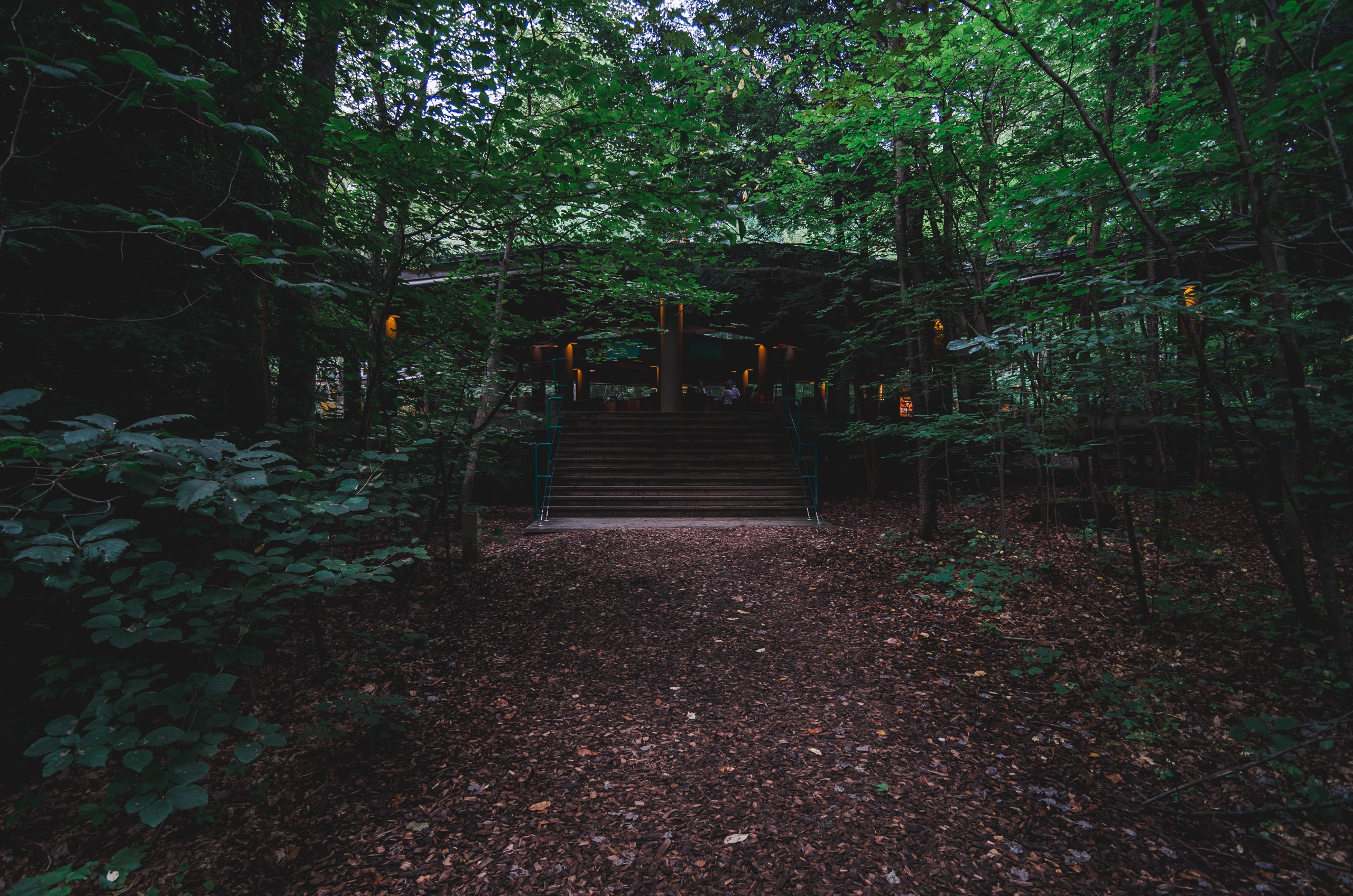
Approaching the Visitor Center
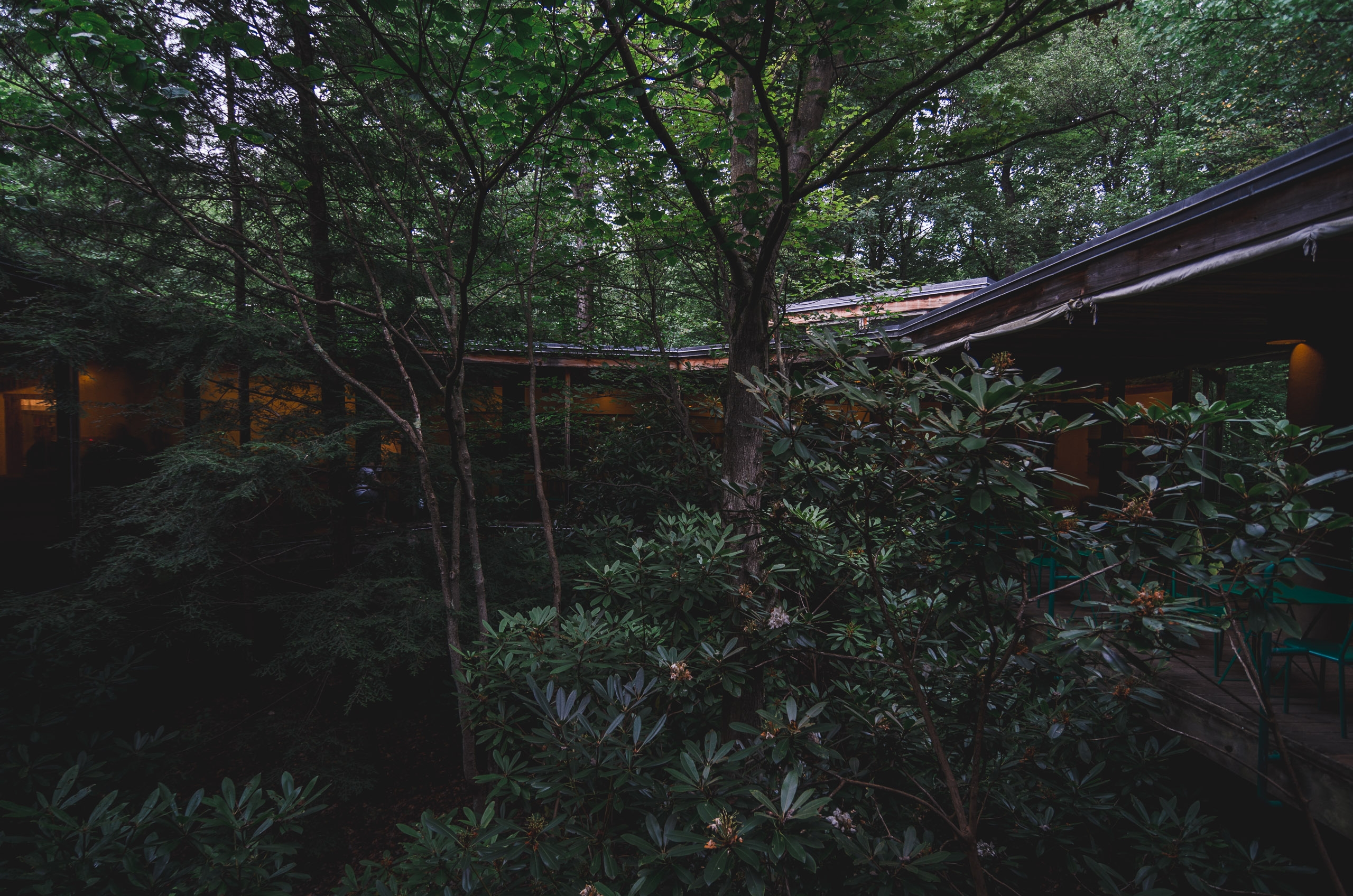
The Wrap Around Deck
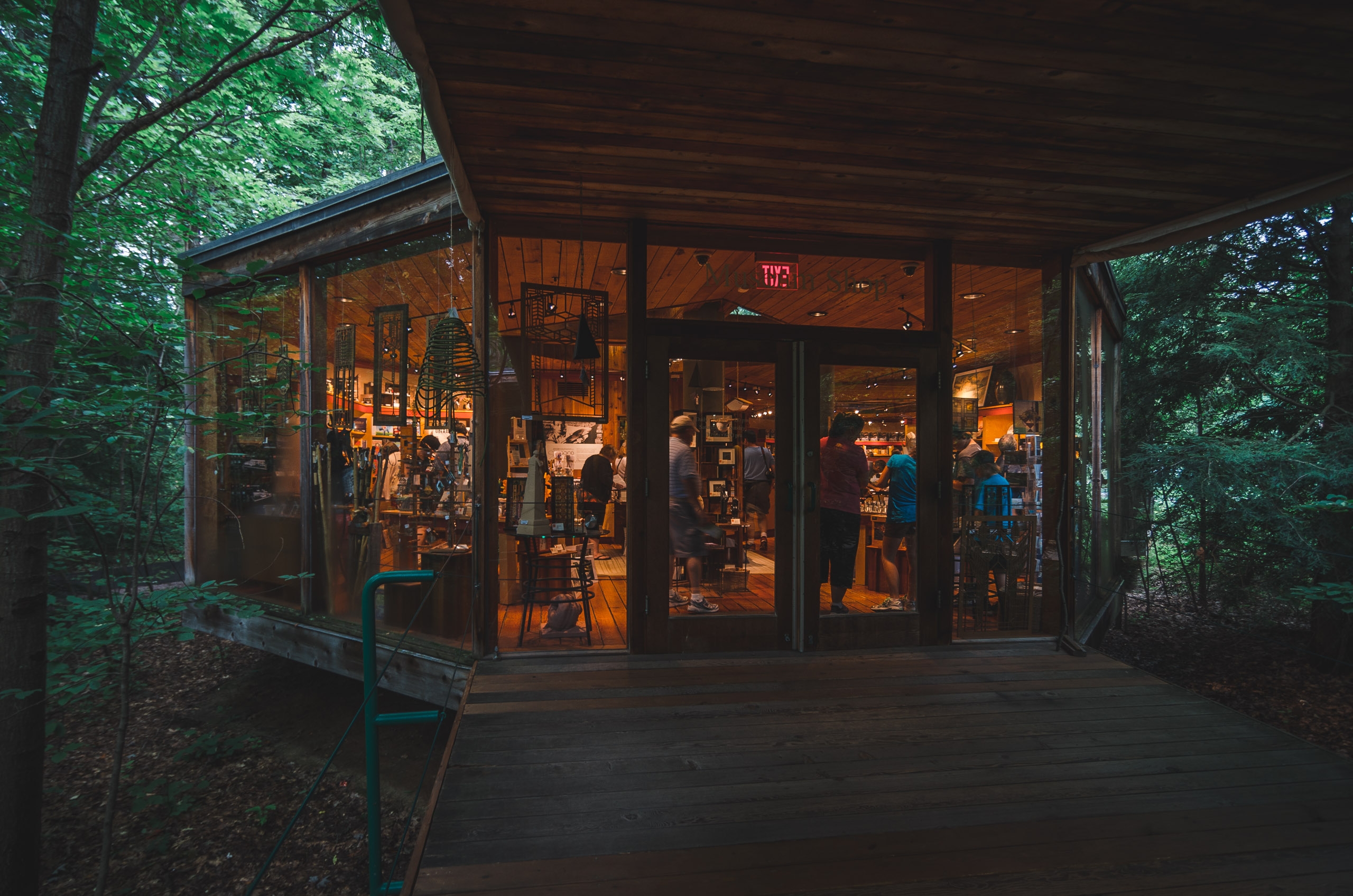
The Gift Shop
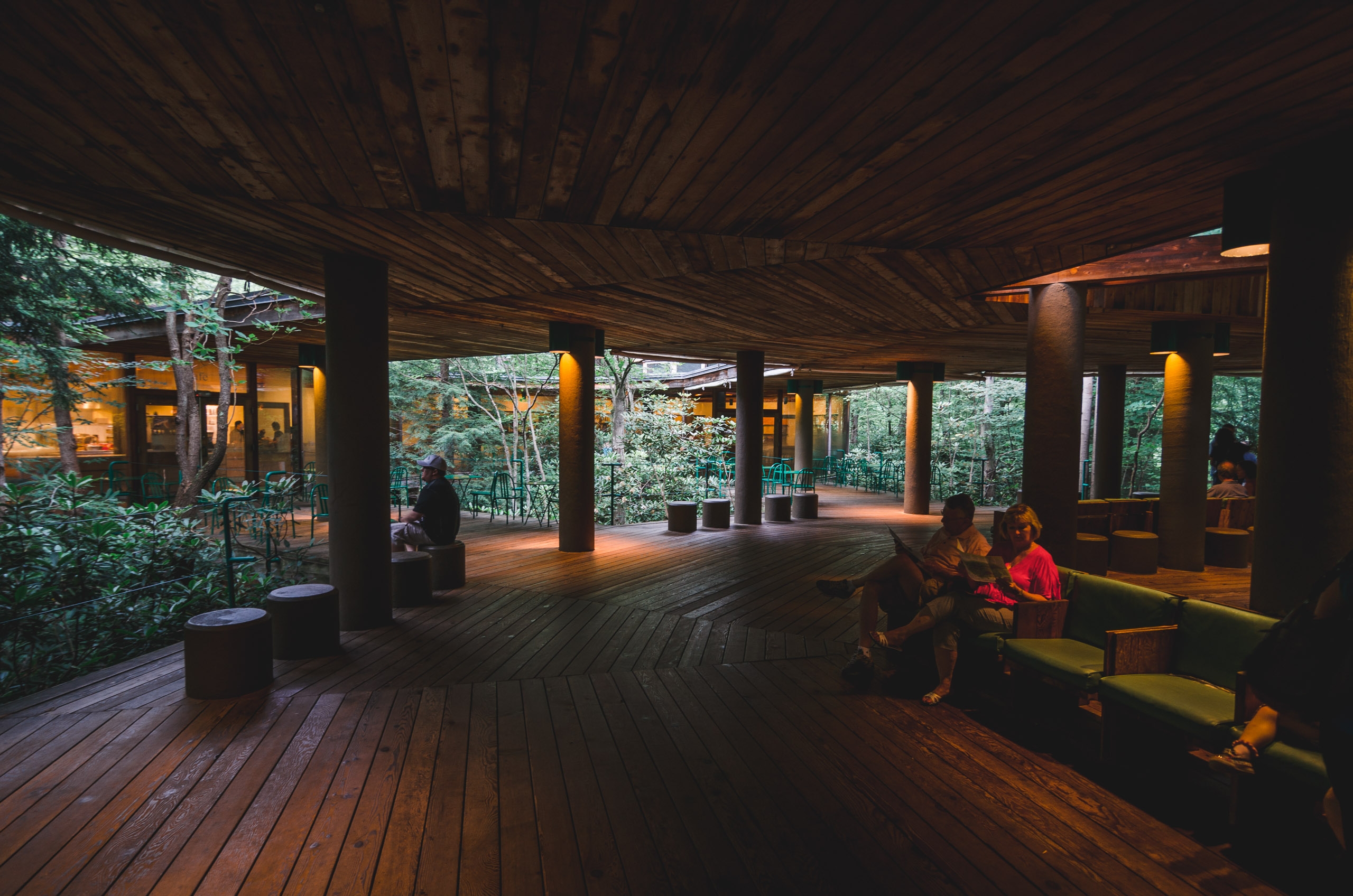
The Waiting Area
Frank Lloyd Wright is easily the most renowned architect of the United States. During his lengthy and prolific career, he was commissioned for more than 1,000 designs resulting in over 500 completed works, among them the Imperial Hotel in Tokyo, the headquarters of the SC Johnson Wax Company in Racine, Wisconsin, The Marin County Civic Center in San Rafael, California and the Guggenheim Museum in New York City, completed in 1959, months prior to Wright's death at age 91. Although he most known for his Prairie Homes and the Arts & Crafts style, Wright was an innovator in modern designs that were simple, minimal, integral into their environment and expensive to maintain.
Edgar Kauffman, Jr. had an interest in architecture and for a time studied at Wright's studio Taliesen. He introduced his parents to the architect in the 1930s, and in addition to their collaboration on Fallingwater, enjoyed a long and close relationship.
The Kauffman family purchased 1,500 acres of land adjacent to a 5,000 acre nature preserve as the site for a a year-round weekend retreat and country home. As avid an outdoorsman, Edgar Kaufmann wanted a location and house that would truly connect with nature. Set along a rocky canyon adjacent to a beautiful waterfall, Kaufmann originally envisioned a house that would sit across from the water as its featured view.
After touring the property, Wright decided that rather than build a house facing the waterfall, he would build one atop it. The concept called for a tall central core anchored on the bedrock of the stream's ledge, with the entirety of the house and its large, concrete terraces perilously cantilevered outward. Wright's own engineers rejected his designs as unworkable, but Wright directed the house be built anyway. Unbeknownst to Wright, the Kaufmanns doubled the amount of specified structural steel (this was Pittsburgh, after all). To Wright's credit, the house has held up well over its 75 years. A major structural renovation was performed during the 90s to address sagging (one of the terraces had dropped 7.5 inches). Since the retrofit, there has been no notable movement of the house or its foundation.
The original budget for the home was $22,000, but it was completed three years later for $155,000 inclusive of the then-outrageous $8,000 in architect's fees. In today's dollars, the cost would be about $2.5M which, while a lot of money, is not outrageous for a trophy home. However, its a near certainty that no state today would approve building a home atop a waterfall.
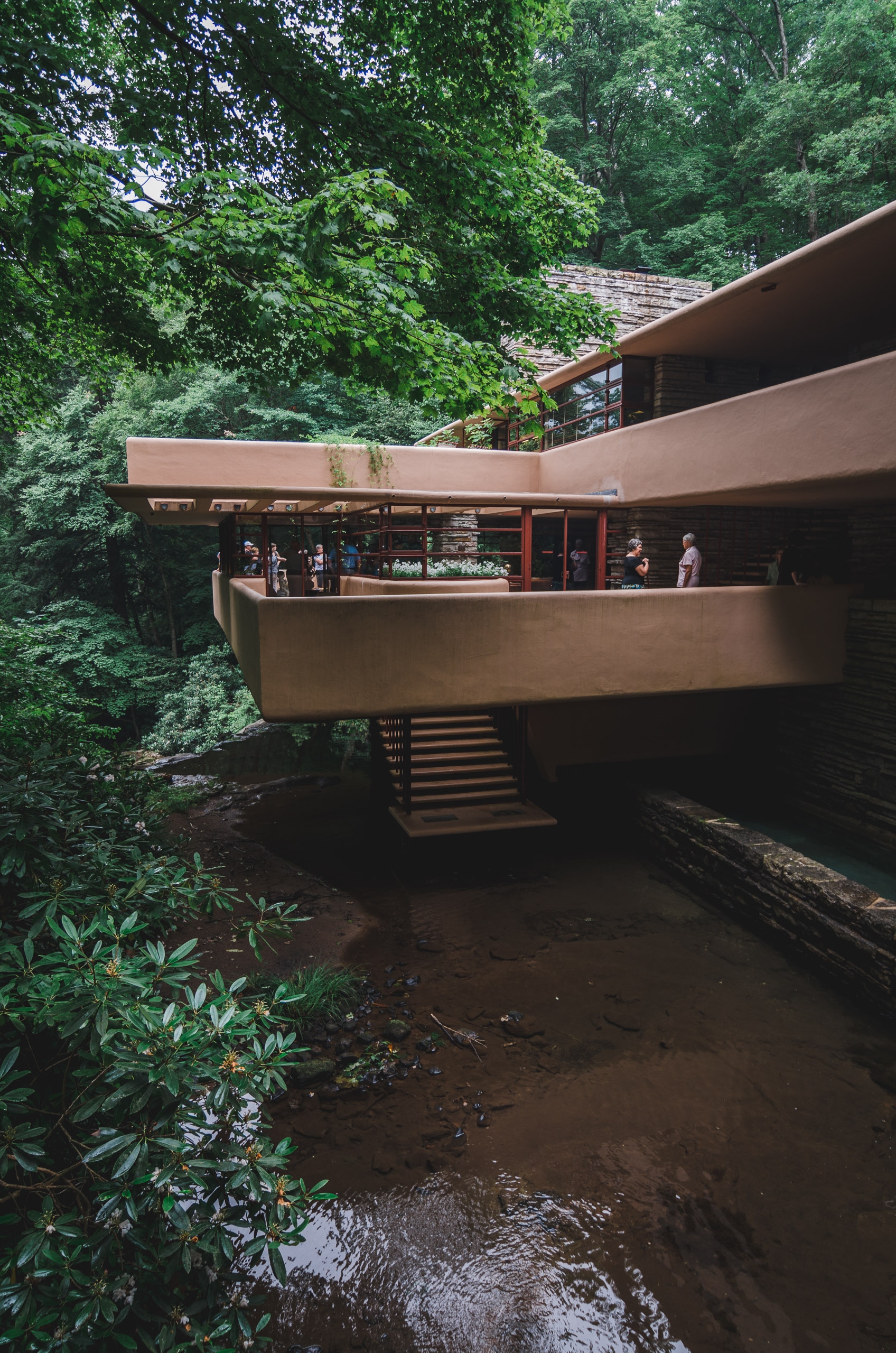
The Entrance over the Water
Aside from the photography restrictions, the tour was great. What I found interesting is that when Edgar Jr. donated the home, he left nearly all of the home's original furnishings intact. Today the tour of the home is entirely as it was when the Kauffman's occupied it. While the Kauffman's weren't an historically notable family, they were very well traveled and had very good, very expensive tastes. Nearly all of the furniture was designed by Wright specifically for the home, with the balance of furnishings collected from their travels around the world, including many beautiful original pieces by Tiffany, and original works of art by Picasso, Diego Rivera, Jacques Lipchitz and John James Audobon. The collection of artwork was impressive, but since I was too stingy to buy a ticket that permitted photos, you'll have to take my word for it.
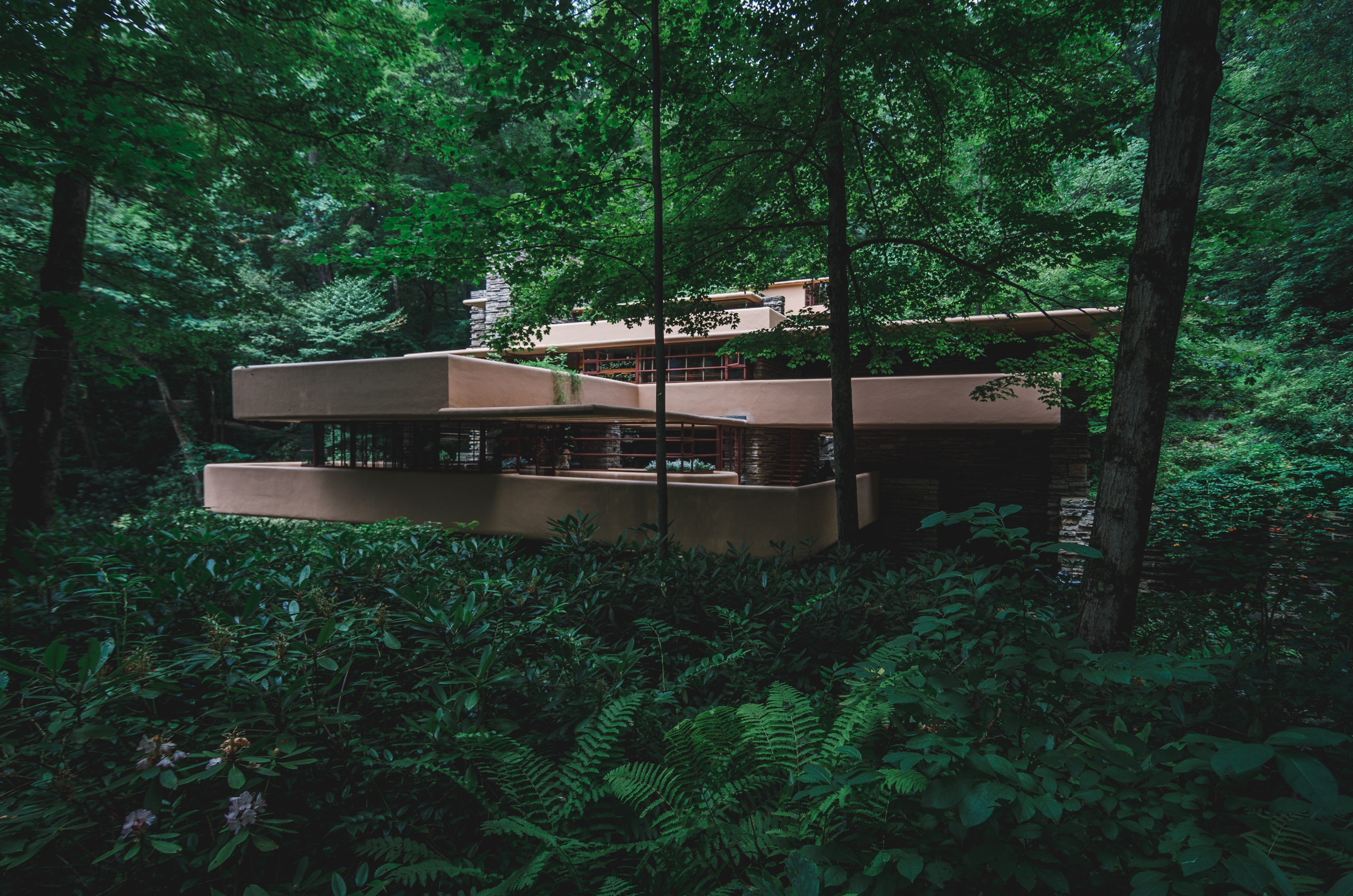
The House from the Trees
The highlight of the visit is a 5 minute walk down a nature path to a clearing on the property called simply, "The View." From here you can look back across the gorge toward the house and the waterfall underneath. The most famous photos of the home are taken from this spot. If you Google "Fallingwater" and look at the images, you'll see some amazing photos from all four seasons, particularly breathtaking in Fall during the foliage change and the winter months.
If you're an architecture nerd like Jessica and I, this is a must-see. If you've got a free afternoon in Pittsburgh, rent a car and make the drive. You will be impressed. If you're not, drive up the road 25 miles and visit the Rolling Rock Brewery in Latrobe (we did not, but maybe next time).
Photos taken at The View:
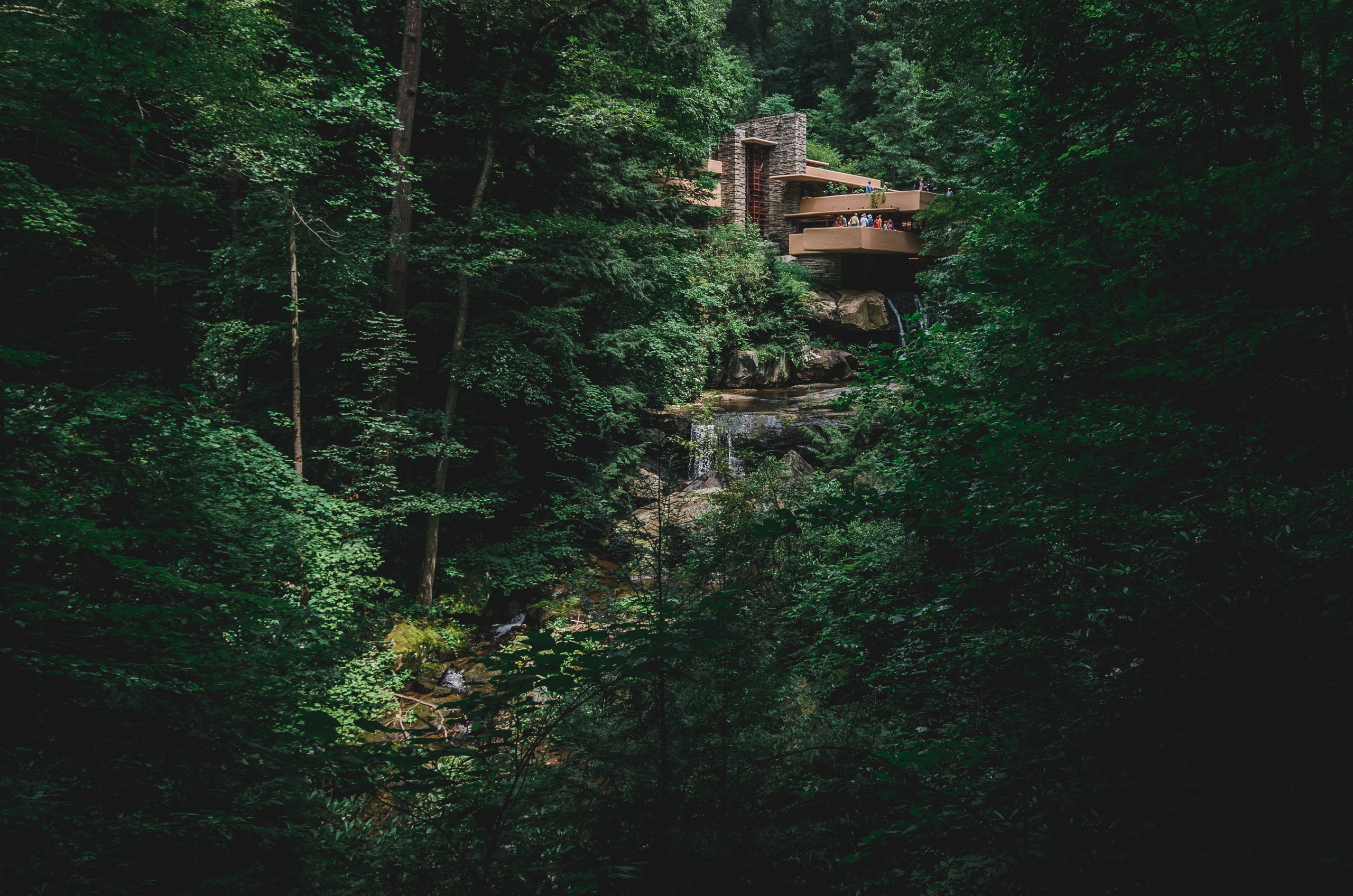
The View of Fallingwater - Wide Part II
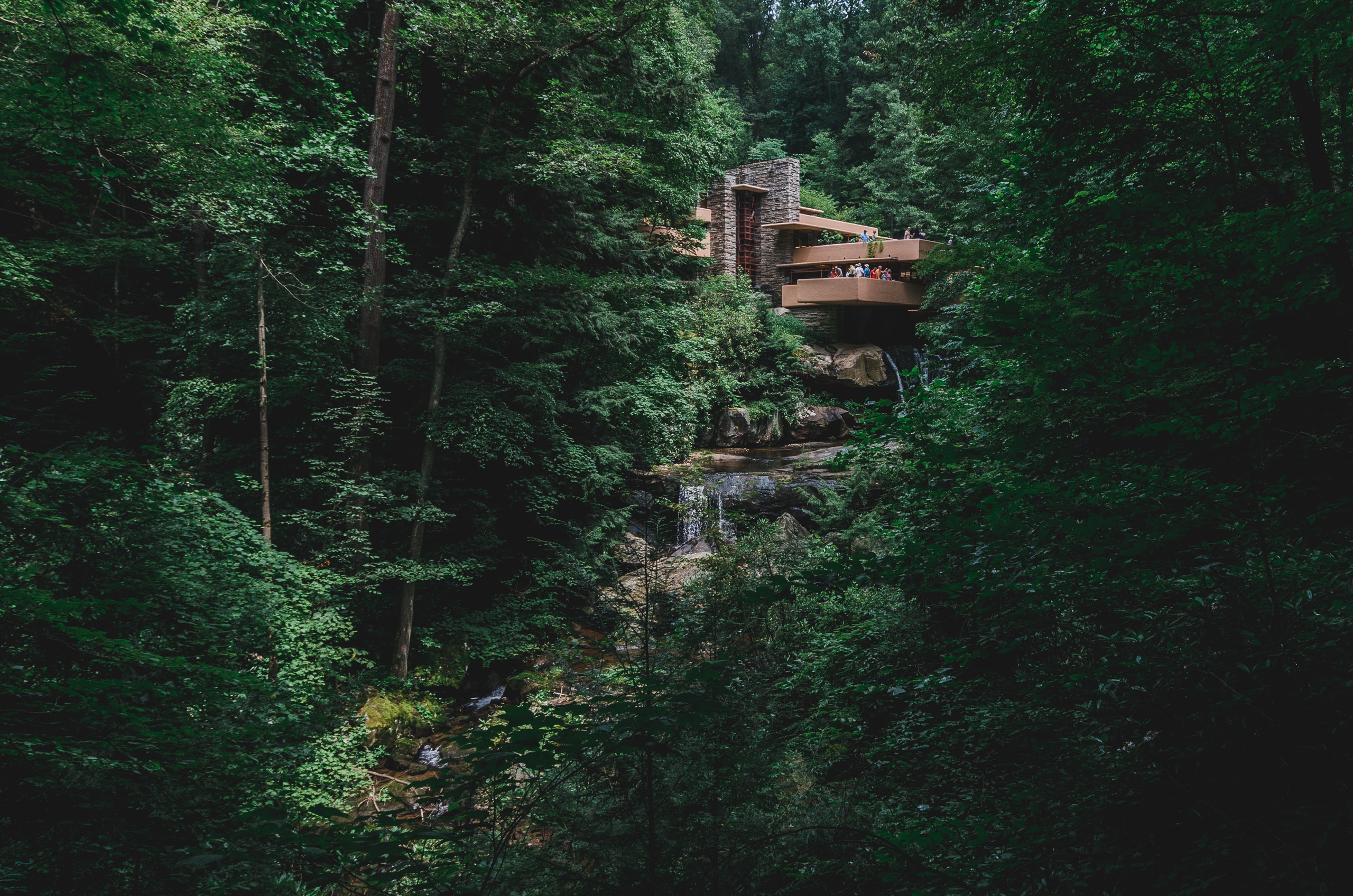
The View of Fallingwater - Wide